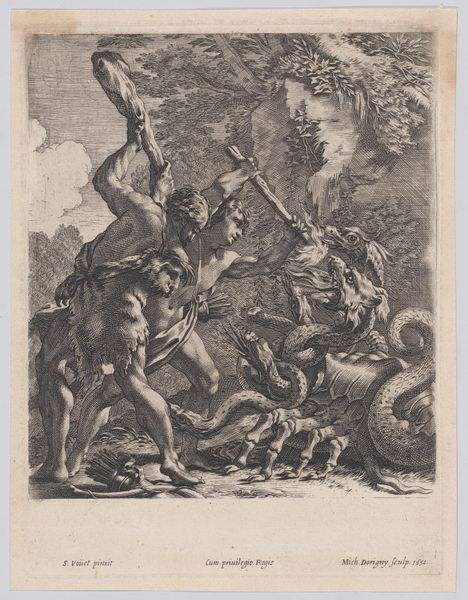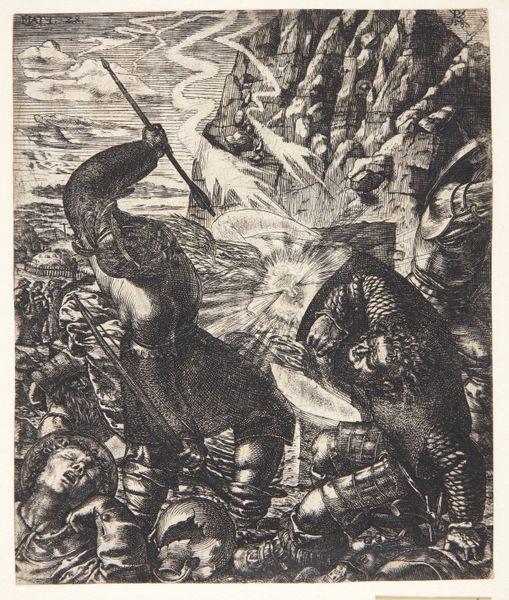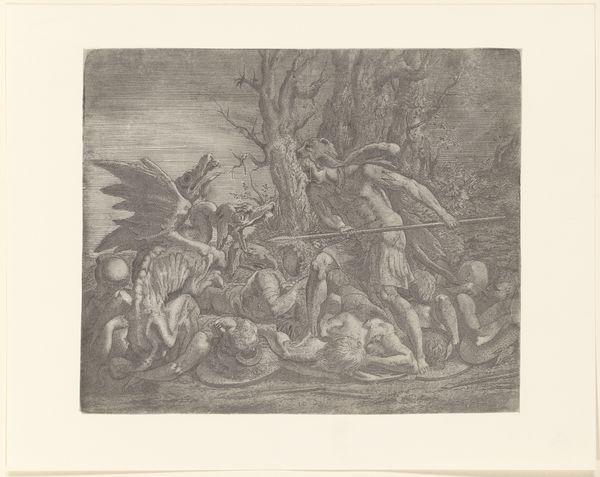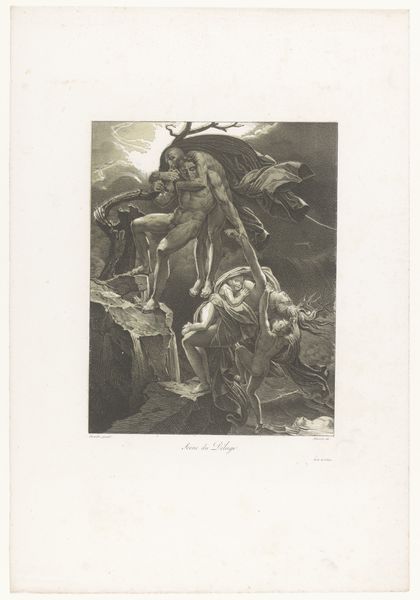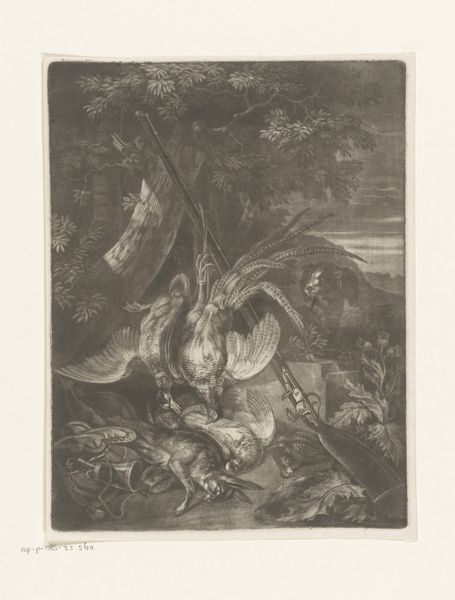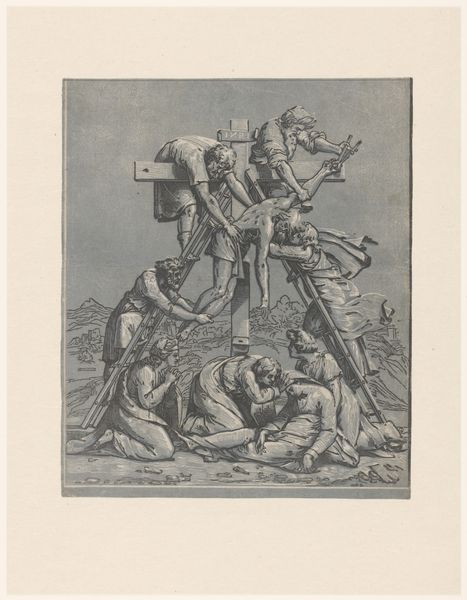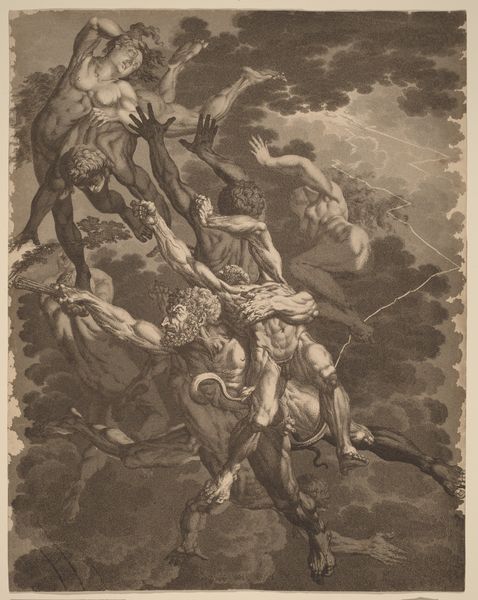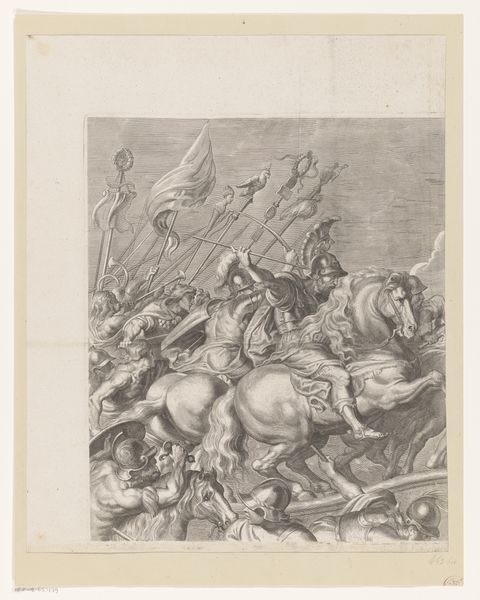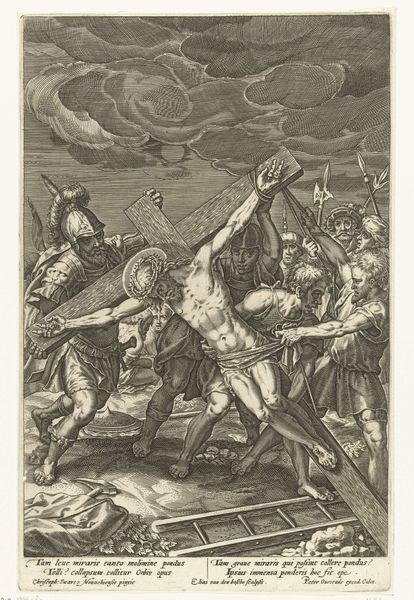
print, etching, engraving
#
narrative-art
# print
#
etching
#
old engraving style
#
mannerism
#
figuration
#
pencil drawing
#
history-painting
#
engraving
Dimensions: height 248 mm, width 209 mm
Copyright: Rijks Museum: Open Domain
This print, "Opstanding", was made by Philipp Uffenbach in the late 16th or early 17th century, using the intaglio process of etching. A metal plate, most likely copper, was coated with a waxy ground, into which the artist scratched his design. The plate was then submerged in acid, which bit away the exposed lines, allowing them to hold ink. Look closely, and you can see how Uffenbach has used the etched line to create a complex scene. The relatively soft, irregular quality of the etched line allowed for a great deal of expressive freedom. He would have controlled the depth of the line by varying the time the plate spent in the acid bath. This is especially evident in the bold hatching used to model the figures and create a sense of depth. Consider the labor involved in producing such a print: the skilled work of the etcher, of course, but also the labor of the papermaker and the printer. Prints like this one were a key means of disseminating images and ideas in early modern Europe, contributing to a growing culture of visual literacy and a wider distribution of knowledge. They challenge our ideas about what constitutes ‘art,’ and remind us that images have always been made and circulated through a complex web of social and economic relations.
Comments
No comments
Be the first to comment and join the conversation on the ultimate creative platform.
